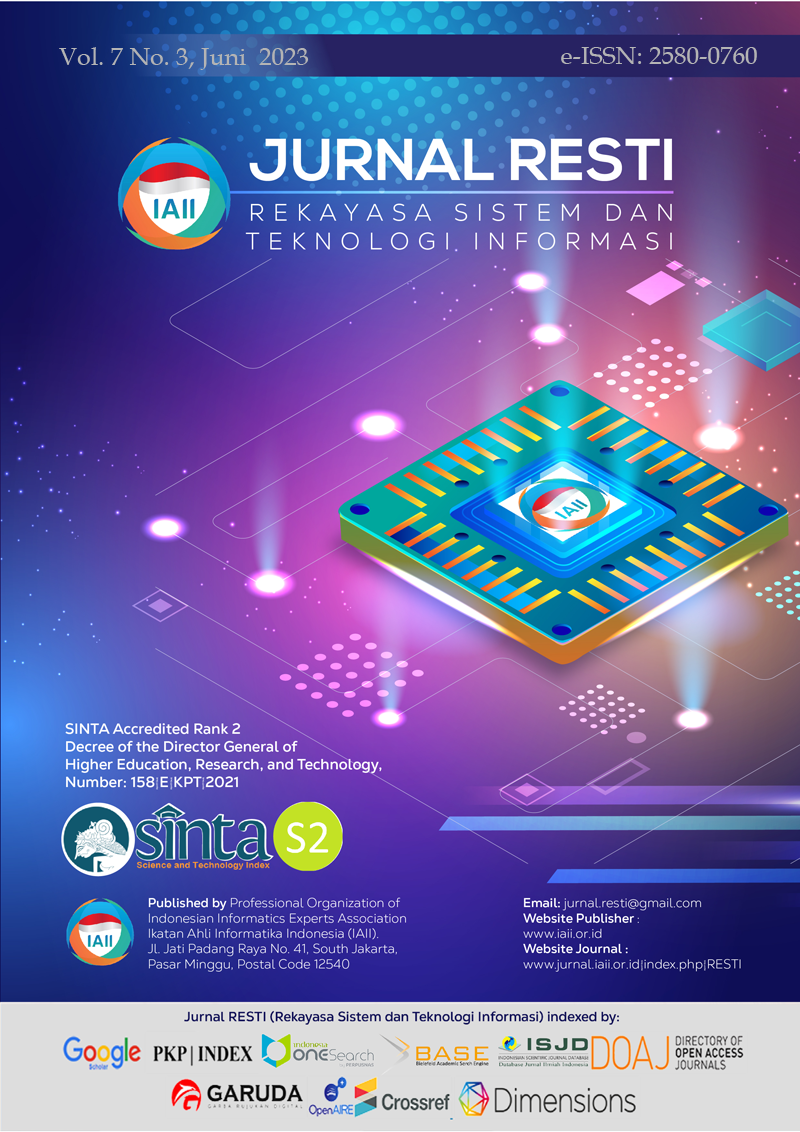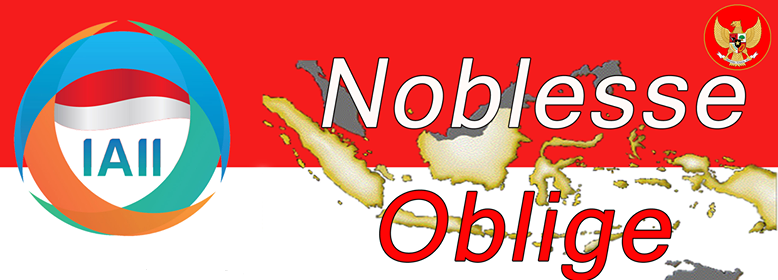Sentiment Analysis of Public Acceptance of Covid-19 Vaccines Types in Indonesia using Naïve Bayes, Support Vector Machine, and Long Short-Term Memory (LSTM)
Abstract
The Covid-19 vaccination is a government program during the pandemic to create herd immunity so that people become more productive in their activities. In Indonesia, the Covid-19 vaccination campaign employs a range of vaccines and has sparked a range of responses from the public on social media, particularly Twitter. Users can tweet and communicate with one another on the social networking site Twitter. This study uses a Sentiment Analysis technique using the Nave Bayes (NB), Support Vector Machine (SVM), and Long Short-Term Memory (LSTM) algorithms to conduct a sentiment analysis of public acceptance of the type of Covid-19 vaccine used in Indonesia using Twitter data. Various types of vaccines in Indonesia include Sinovac, Vaksin Covid-19 Bio Farma, AstraZeneca, Pfizer, Moderna, Sinopharm, Novavax, Sputnik-V, Janssen, Convidencia, Zifivax, often confuse the public in determining the objectivity of this opinion. In addition, theoretically, this study also seeks to contrast the NB, SVM, and LSTM algorithms with experimental techniques to obtain the best algorithm model. The stages of the research involved gathering information based on Twitter user opinions about the type of Covid-19 vaccine on Twitter from January 2021 to January 2022. The researcher used Indonesian language tweet data with the keywords #vaksincorona, #vaksincovid19, #vaksinasi, #ayovaksin, #lawancovid19, and #vaksinindonesia. Before modelling, the pre-processing stage consists of case folding, tokenizing, filtering, stemming, and word weighting using TF-IDF. After that, model testing was carried out using Cross Validation with the Python programming language, and evaluation and validation of the test results using the Confusion Matrix. The results showed that the accuracy score of the SVM method for the best model was 84.89%, while for the Naïve Bayes and LSTM algorithms, they were 84.65% and 82.97%, respectively.
Downloads
References
WHO, “World Health Organization - Virtual press conference on COVID-19 – 11 March 2020 Speaker,” WHO.int, 2020. https://www.who.int/docs/default-source/coronaviruse/transcripts/who-audio-emergencies-coronavirus-press-conference-full-and-final-11mar2020.pdf?sfvrsn=cb432bb3_2 (accessed May 04, 2020).
“COVID Live - Coronavirus Statistics - Worldometer.” .
M. F. Naufal and S. F. Kusuma, “Analisis Sentimen pada Media Sosial Twitter Terhadap Kebijakan Pemberlakuan Pembatasan Kegiatan Masyarakat Berbasis Deep Learning,” J. Edukasi dan Penelit. Inform., vol. 8, no. 1, pp. 44–49, 2022.
K. P. COVID-19, “VAKSINASI COVID-19 LINDUNGI DIRI, LINDUNGI NEGERI - Materi Edukasi | Covid19.go.id,” 2021. .
Kemenkes RI;ITAGI; UNICEF; and WHO, “Survei Penerimaan Vaksin COVID-19 di Indonesia,” 2020. .
M. A. Harahap and S. Adeni, “Tren penggunaan media sosial selama pandemi di indonesia,” J. Prof. FIS UNIVED, vol. 7, no. 2, pp. 13–23, 2020.
F. V. Sari and A. Wibowo, “Analisis Sentimen Pelanggan Toko Online Jd.Id Menggunakan Metode Naïve Bayes Classifier Berbasis Konversi Ikon Emosi,” J. SIMETRIS, vol. 10, no. 2, pp. 681–686, 2019.
M. Murnawan, “Pemanfaatan Analisis Sentimen Untuk Pemeringkatan Popularitas Tujuan Wisata,” J. Penelit. Pos dan Inform., vol. 7, no. 2, p. 109, 2017, doi: 10.17933/jppi.2017.070203.
J. R. Harahap, “Analisis Sentimen Terhadap Vaksinasi Covid-19 di Indonesia Menggunakan Data Twitter,” Repository.Ipb.Ac.Id, 2021.
D. A. Kristiyanti, A. H. Umam, M. Wahyudi, R. Amin, and L. Marlinda, “Comparison of SVM Naïve Bayes Algorithm for Sentiment Analysis Toward West Java Governor Candidate Period 2018-2023 Based on Public Opinion on Twitter,” in 2018 6th International Conference on Cyber and IT Service Management, CITSM 2018, 2019, pp. 1–6, doi: 10.1109/CITSM.2018.8674352.
F. Fitriana, E. Utami, and H. Al Fatta, “Analisis Sentimen Opini Terhadap Vaksin Covid - 19 pada Media Sosial Twitter Menggunakan Support Vector Machine dan Naive Bayes,” J. Komtika (Komputasi dan Inform., vol. 5, no. 1, pp. 19–25, 2021, doi: 10.31603/komtika.v5i1.5185.
A. Shahzad et al., “COVID-19 Vaccines Related User’s Response Categorization Using Machine Learning Techniques,” Computation, vol. 10, no. 8, 2022, doi: 10.3390/computation10080141.
D. A. Kristiyanti and N. Normah, “Optimising the Particle Swam Optimazion Usage for Predicting Indonesia Presidential Election Result Period 2019-2024,” SinkrOn, vol. 4, no. 1, p. 32, 2019, doi: 10.33395/sinkron.v4i1.10149.
L. Zhang, S. Wang, and B. Liu, “Deep learning for sentiment analysis: A survey,” Wiley Interdiscip. Rev. Data Min. Knowl. Discov., vol. 8, no. 4, 2018, doi: 10.1002/widm.1253.
S. Hansun, A. Suryadibrata, R. Nurhasanah, and J. Fitra, “Tweets Sentiment on Ppkm Policy As a Covid-19 Response in Indonesia,” Indian J. Comput. Sci. Eng., vol. 13, no. 1, pp. 51–58, 2022, doi: 10.21817/indjcse/2022/v13i1/221301302.
W. are S. Hootsuite, “Digital 2022 Global Overview Report,” Jan. 26, 2022. https://wearesocial.com/sg/blog/2022/01/digital-2022-another-year-of-bumper-growth/ (accessed Feb. 02, 2020).
Merinda Lestandy, Abdurrahim Abdurrahim, and Lailis Syafa’ah, “Analisis Sentimen Tweet Vaksin COVID-19 Menggunakan Recurrent Neural Network dan Naïve Bayes,” J. RESTI (Rekayasa Sist. dan Teknol. Informasi), vol. 5, no. 4, pp. 802–808, 2021, doi: 10.29207/resti.v5i4.3308.
P. A. Sumitro, Rasiban, D. I. Mulyana, and W. Saputro, “Analisis Sentimen Terhadap Vaksin Covid-19 di Indonesia pada Twitter Menggunakan Metode Lexicon Based,” J-ICOM - J. Inform. dan Teknol. Komput., vol. 2, no. 2, pp. 50–56, 2021, doi: 10.33059/j-icom.v2i2.4009.
A. Rahman et al., “Analisis Perbandingan Algoritma LSTM dan Naive Bayes untuk Analisis Sentimen,” JEPIN (Jurnal Edukasi dan Penelit. Inform., vol. 8, no. 2, pp. 299–303, Aug. 2022.
C. Silva and B. Ribeiro, “The Importance of Stop Word Removal on Recall Values in Text Categorization,” Proc. Int. Jt. Conf. Neural Networks, vol. 3, pp. 1661–1666, 2003, doi: 10.1109/ijcnn.2003.1223656.
M. Nurjannah and I. Fitri Astuti, “Penerapan Algoritma Term Frequency-Inverse Document Frequency (Tf-Idf) Untuk Text Mining,” Jurnal Informatika Mulawarman, 2013. .
F. M. J. M. Shamrat et al., “Sentiment analysis on twitter tweets about COVID-19 vaccines using NLP and supervised KNN classification algorithm,” Indones. J. Electr. Eng. Comput. Sci., vol. 23, no. 1, pp. 463–470, 2021, doi: 10.11591/ijeecs.v23.i1.pp463-470.
Z. Guo, “Text classification based on naive bayes with adjusted weights via frequency ratio of feature words,” Proc. - 2021 Int. Conf. Comput. Technol. Media Converg. Des. CTMCD 2021, pp. 263–267, Apr. 2021, doi: 10.1109/CTMCD53128.2021.00063.
A. Harun and D. P. Ananda, “Analisa Sentimen Opini Publik Tentang Vaksinasi Covid-19 di Indonesia Menggunakan Naïve Bayes dan Decission Tree,” MALCOM Indones. J. Mach. Learn. Comput. Sci., vol. 1, no. 1, pp. 58–63, 2021.
“1.4. Support Vector Machines — scikit-learn 1.1.3 documentation.” .
E. Indrayuni, A. Nurhadi, and D. A. Kristiyanti, “Implementasi Algoritma Naive Bayes, Support Vector Machine, dan K-Nearest Neighbors untuk Analisa Sentimen Aplikasi Halodoc,” Fakt. Exacta, vol. 14, no. 2, p. 64, 2021, doi: 10.30998/faktorexacta.v14i2.9697.
D. A. Putri, D. A. Kristiyanti, E. Indrayuni, A. Nurhadi, and D. R. Hadinata, “Comparison of Naive Bayes Algorithm and Support Vector Machine using PSO Feature Selection for Sentiment Analysis on E-Wallet Review,” J. Phys. Conf. Ser., vol. 1641, no. 1, 2020, doi: 10.1088/1742-
Copyright (c) 2023 Jurnal RESTI (Rekayasa Sistem dan Teknologi Informasi)

This work is licensed under a Creative Commons Attribution 4.0 International License.
Copyright in each article belongs to the author
- The author acknowledges that the RESTI Journal (System Engineering and Information Technology) is the first publisher to publish with a license Creative Commons Attribution 4.0 International License.
- Authors can enter writing separately, arrange the non-exclusive distribution of manuscripts that have been published in this journal into other versions (eg sent to the author's institutional repository, publication in a book, etc.), by acknowledging that the manuscript has been published for the first time in the RESTI (Rekayasa Sistem dan Teknologi Informasi) journal ;







